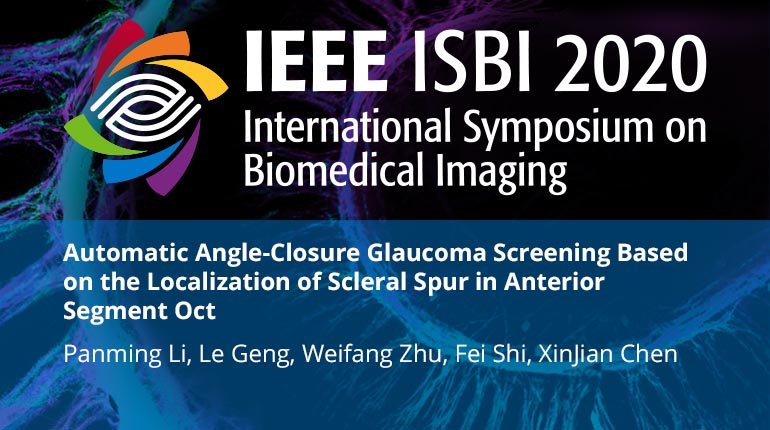Collection:

As one of the major types of glaucoma, closed-angle glaucoma is the leading cause of irreversible blindness in the world. The ability of Anterior Segment Optical Coherence Tomography (AS-OCT) to obtain high-resolution cross-sectional images of the entire anterior chamber in a single image makes it an important tool for glaucoma diagnosis. In this paper, we propose a practical and efficient system based on deep learning to accurately classify anterior chamber angle (ACA) closure by using the location of scleral spur (SS) points. First, the localization problem is reformulated as a pixel-wise regression task. A fully convolutional deep neural network is optimized to predict the probability that each pixel belongs to the SS points, and the numerical coordinates are obtained by the maximum likelihood estimation theory. Second, the ACA region centered on the detected SS is cropped as the input of the classification model. The single model applied for classification is SE-ResNet18 and optimized with focal loss. In the AGE Challenge 2019[1], our proposed method obtained superior performance for angle-closure glaucoma screening.
- IEEE MemberUS $11.00
- Society MemberUS $0.00
- IEEE Student MemberUS $11.00
- Non-IEEE MemberUS $15.00
Videos in this product
Automatic Angle-Closure Glaucoma Screening Based on the Localization of Scleral Spur in Anterior Segment Oct
As one of the major types of glaucoma, closed-angle glaucoma is the leading cause of irreversible blindness in the world. The ability of Anterior Segment Optical Coherence Tomography (AS-OCT) to obtain high-resolution cross-sectional images of the entire anterior chamber in a single image makes it an important tool for glaucoma diagnosis. In this paper, we propose a practical and efficient system based on deep learning to accurately classify anterior chamber angle (ACA) closure by using the location of scleral spur (SS) points. First, the localization problem is reformulated as a pixel-wise regression task. A fully convolutional deep neural network is optimized to predict the probability that each pixel belongs to the SS points, and the numerical coordinates are obtained by the maximum likelihood estimation theory. Second, the ACA region centered on the detected SS is cropped as the input of the classification model. The single model applied for classification is SE-ResNet18 and optimized with focal loss. In the AGE Challenge 2019[1], our proposed method obtained superior performance for angle-closure glaucoma screening.
 Cart
Cart Create Account
Create Account Sign In
Sign In
